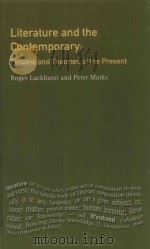《A History of the Theories of Aether and Electricity. The Classical Theories》
| 作者 | 编者 |
|---|---|
| 出版 | 未查询到或未知 |
| 参考页数 | 434 |
| 出版时间 | 没有确切时间的资料 目录预览 |
| ISBN号 | 无 — 求助条款 |
| PDF编号 | 811279928(仅供预览,未存储实际文件) |
| 求助格式 | 扫描PDF(若分多册发行,每次仅能受理1册) |
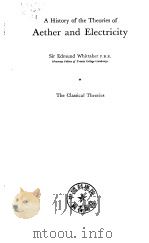
ⅠTHE THEORY OF THE AETHER TO THE DEATH OF NEWTON1
The relation of Early Science to Philosophy1
Aristotelian Physics2
The fall of Scholasticism:Bacon,Descartes,Galileo3
Kepler:the Physical writings of Descartes5
Descartes'Cosmogony and Optics9
Fermat attacks Descartes'Theory of Light:the Principle of Least Time11
Hooke's Undulatory Theory:the advance of Wave-fronts13
Newton overthrows Hooke's Theory of Colours17
Conception of the Aether in the writings of Newton19
Newton's Theories of the Periodicity of Homogeneous Light and of Fits of Easy Transmission21
The Velocity of Light:Galileo,Roemer22
Huygens'Trailé de la Lumière:His Theories of the Propagation of Waves and of Crystalline Optics23
Newton shows that Rays obtained by Double Refraction have Sides:His Objections to the Wave Theory27
Newton's Principia:the delay in its acceptance28
Le Sage's Ultra-Mundane Corpuscles31
ⅡELECTRIC AND MAGNETIC SCIENCE PRIOR TO THE INTRODUC-TION OF THE POTENTIALS33
The Early History of Magnetism:Pierre de Maricourt,Gilbert,Descartes33
The Electrical Researches of Gilbert:the Theory of Emanations35
State of Physical Science in the First Half of the Eighteenth Century:the Nature of Heat37
Gray discovers Electric Conduction:Desaguliers41
The Electric Fluid42
Du Fay distinguishes Vitreous and Resinous Electricity44
Nollet's Effluent and Affluent Streams44
The Leyden Phial45
The One-Fluid Theory:Ideas of Watson and Franklin46
Final Overthrow by Aepinus of the Doctrine of Effluvia51
Priesfley discovers the Law of Electrostatic Force53
Cavendish54
Michell discovers the Law of Magnetic Force56
The Two-Fluid Theory:Coulomb57
Limited Mobility of the Magnetic Fluids59
Poisson's Mathematical Theory of Electrostatics61
The Equivalent Surface-and Volume-Distributions of Magnetism:Poisson's Theory of Magnetic Induction64
Green's Nottingham Memoir65
ⅢGALVANISM,FROM GALVANI TO OHM67
Sulzer's Discovery67
Galvanic Phenomena67
Rival Hypotheses regarding the Galvanic Fluid69
The Voltaic Pile71
Nicholson and Carlisle decompose Water voltaically73
Davy's Chemical Theory of the Pile75
Voltaic Polarisation76
Grothuss'Chain76
De La Rive's Hypothesis77
Berzelius'Scheme of Electro-chemistry78
Early Atrempts to discover a connexion between Electricity and Magnetism80
Oersted's Experiment:His Explanation of it81
The Law of Biot and Savart82
The Researches of Ampère on Electrodynamies83
Seebeck's Phenomenon89
Davy's Researches or Conducting Power90
Ohm's Theory:Eleetroscopic Force91
ⅣTHE LUMINIFEROUS MEDIUM FROM BRADLEY TO FRESNEL94
Bradley discovers Aberration94
Johann Bernoulli's Model of the Aether95
Maupertuis and the Principle of Least Action97
Euler's Aether98
Views of Courtivron and Melvill99
Radiant Heat and Ultra-violet Light99
Young defends the Wave Theory and Explains the Colours of Thin Plates100
Laplace supplies a Corpuscular Theory of Double Refraction104
Young proposes a Dynamical Theory of Light in Crystals104
Researches of Malus on Polarisation105
Brewster's recognition of Biaxal Crystals107
Fresnel successfully explains Diffraction107
His Theory of the Relative Motion of Aether and Matter108
Young suggests the Transversality of the Vibrations of Light114
Fresnel discusses the Dynamics of Transverse Vibrations116
Fresnel's Theory of the Propagation of Light in Crystals117
Hamilton predicts Conical Refraction122
Fresnel's Theory of Reflexion123
Experiments of Airy,Foucault and Fizeau126
ⅤTHE AETHER AS AN ELASTIC SOLID128
Astronomical objection to the Elastic-solid Theory:Stokes's Hypothesis128
Navier and Cauchy discover the Fquation of Vibration of an Elastic Solid129
Poisson distinguishes Condensational and Distortional Waves131
Cauchy's First and Second Theories of Light in Crystals133
Cauchy's First Theory of Reflexion134
His Second Theory of Reflexion136
The Theory of Reflexion of MacCullagh and Neumann137
Green discovers the correct Conditions at the Boundaries139
Green's Theory of Reflexion:objections to it140
MacCullagh introduces a New Type of Elastic Solid142
W.Thomson's Model of a Rotationally-elastic Body145
Cauchy's Third Theory of Reflexion:the Contractile Aether145
Later Work of W.Thomson and others on the Contractile Aether147
Green's First and Second Theories of Light in Crystals148
Influence of Green:Neglect of his work during his Lifetime153
Researches of Stokes on the relation of the Direction of Vibration of Light to its Plane of Polarisation154
The Hypothesis of Aeolotropie Inertia156
Rotation of the Plane of Polarisation of Light by Active Bodies158
MacCullagh's Theory of Natural Rotatory Power159
MacCullagh and Cauchy's Theory of Metallic Reflexion161
Extension of the Elastic-solid Theory to Metals163
Lord Rayleigh's objection164
Cauchy's Theory of Dispersion165
Boussinesq's Elastic-solid Theory167
ⅥFARADAY170
Discovery of Induced Currents:Lines of Magnetic Force171
Self-induction174
Identity of Frictional and Voltaic Electricity:Faraday's views on the Nature of Electricity175
Electro-chemistry177
Controversy between the adherents of the Classical and Contact Hypotheses180
The Properties of Dielectrics184
Theory of Dielectric Polarisaton:Faraday,W.Thomson and Mossotti186
The Connexion between Magnetism and Light190
Airy's Theory of Magnetic Rotatory Polarisation191
Faraday's Thoughts on Ray-Vibrations193
Researches of Faraday and Plücker on Diamagnetism194
ⅦTHE MATHEMATICAL ELECTRICIANS OF THE MIDDLE OF THE NINETEENTH CENTURY198
F.Neumann's Theory of Induced Currents:the Electrodynamic Potential198
W.Weber's Theory of Electrons201
Electrostatic and Electromagnetic Units202
Criticisms of Weber's Theory203
Deduction of the Formulae for the Induction of Currents204
Riemann's Law206
Proposals to modify the Law of Gravitation207
Weber's Theory of Paramagnetism and Diamagnetism:later Theories208
Joule's Law:Energetics of the Voltaic Cell212
The Mechanical Equivalent of Heat213
Helmholtz and the Conservation of Energy214
Carnot's Principle:Cyclical Processes215
Caloric,Entropy and Absolute Temperature215
W.Thomson's Equation of Available Energy217
Researches of Helmholtz on Electrostatic and Electrodynamic Energy217
W.Thomson distinguishes the Circuital and Irrotational Magnetic Vectors219
His Theory of Magnecrystallic Action220
His Formula for the Energy of a Magnetic Field222
Extension of the Formula to the case of Fields produced by Currents223
Kirchhoff identifies Ohm's Electroscopic Force with Electrostatic Potential225
The Discharge of a Leyden Jar:W.Thomson's Theory226
The Velocity of Electricity and the Propagation of Telegraphic Signals227
Clausius'Law of Force between Electric Charges:Crucial Experiments234
Nature of the Current235
The Thermo-electric Researches of Peltier and W.Thomson236
ⅧMAXWELL240
Gauss and Riemann on the Propagation of Electric Actions240
Analogies suggested by W.Thomson241
Maxwell's Hydrodynamical Analogy243
The Vector Potential244
Linear and Rotatory Interpretations of Magnetism245
Maxwell's Mechanical Model of the Electromagnetic Field247
Electric Displacement249
Similarity of Electric Vibrations to those of Light252
Connexion of Refractive Index and Specific Inductive Capacity253
Maxwell's Memoir of 1864255
The inquiry regarding Gravitation258
Maxwell's Treatment of Bodies in Motion258
The Propagation of Electric Disturbances in Crystals and in Metals259
Anomalous Dispersion261
The Maxwell-Sellmeier Theory of Dispersion262
Imperfections of the Electromagnetic Theory of Light266
The Theory of L.Lorenz267
Maxwell's Theory of Stress in the Electric Field271
The Pressure of Radiation273
Recoil produced by the Emission of Light275
Maxwell's Theory of the Magnetic Rotation of Light276
ⅨMODELS OF THE AETHER279
Analogies in which a Rotatory Character is attributed to Magnetism279
Models in which Magnetic Force is represented as a Linear Velocity280
Researches of W.Thomson,Bjerknes,and Leahy on Pulsating and Oscillating Bodies284
MacCullagh's Quasi-elastic Solid as a model of the Electric Medium286
The Hall Effect289
Models of Riemann and FitzGerald291
Helmholtz'discovery regarding Vortex-motion293
Connexion with the Atomic Theory of Matter:W.Thomson's Vortex Atoms293
The Vortex-sponge Theory of the Aether:Researches of W.Thomson,FitzGerald and Hicks295
Larmor on the Aether303
ⅩTHE FOLLOWERS OF MAXWELL304
Helmholtz and Lorentz supply an Electromagnetic Theory of Reflexion304
Crucial Experiments of Helmholtz and Schiller305
The Moving Charged Sphere:Researches of J.J.Thomson,FitzGerald and Heaviside306
Mechanical Force on an Electric Charge moving in a Magnetic Field310
Conduction of Rapidly-alternating Currents311
FitzGerald devises the Magnetic Radiator312
Poynting's Theorem313
Poynting and J.J.Thomson develop the theory of Moving Lines of Force315
Mechanical Momentum in the Electromagnetic Field317
New Derivation of Maxwell's Equations by Hertz319
Hertz's Assumptions and Weber's Theory321
Experiments of Hughes and Hertz on Electric Waves322
The memoirs of Hertz and Heaviside on Fields in which Material Bodies are in Motion328
The Current of Dielectric Convection330
Kerr's Magneto-optic Phenomenon331
Rowland's Theory of Magneto-optics332
The Rotation of the Plane of Polarisation in Naturally-active Bodies334
ⅪCONDUCTION IN SOLUTIONS AND GASES FROM FARADAY TO THE DISCOVERY OF THE ELECTRON335
The Hypothesis of Williamson and Clausius335
Migration of the Ions336
The Researches of Hittorf and Kohlrausch336
Polarisation of Electrodes337
Electrocapillarity338
Single Differences of Potential340
Helmholtz'Theory of Concentration-cells342
Arrhenius'Hypothesis344
The Researches of Nernst345
Earlier investigations of the Discharge in Rarefied Gases349
Faraday observes the Dark Space350
Researches of Plüicker,Hittorf,Goldstein and Varley on the Cathode Rays351
Crookes and the Fourth State of Matter352
Objections and Alternatives to the Charged-particle Theory of Cathode Rays353
Giese's and Schuster's Ionic Theory of Conduction in Gases355
Photo-electricity356
J.J.Thomson measures the Velocity of Cathode Rays357
Discover of χ-rays:Hypoheses regarding them357
Further Researches of J.J.Thomson on Cathode Rays360
Prout's Hypothesis361
The Ratio m/e362
Canal Rays363
Vitreous and Resinous Electricity363
Determination of the Ionic Charge by J.J.Thomson and Townsend364
Electrons,Nature of Ionisation365
Larmor's Argument on the Discrete Nature of Electric Charge365
ⅫCLASSICAL RADIATION-THEORY367
Early discoveries regarding Spectra367
Doppler's Principle368
Connexion of Emission and Absorption of Spectral Lines369
Prevost's Law of Exchanges371
Balfour Stewart and Kircbhoff on Emission and Absorption:Black Bodies371
Intrinsic Brightness of a Surface373
Stefan's Law and Boltzmann's proof of it374
Introduction of Wave-numbers by Stoney and Hartley375
Recognition of Series in Spectra375
Balmer's Formula and Rydberg's Constant376
The Series of the Alkali Metals377
Rydberg and Ritz's Combination-principle378
Wien's Theorems on Black-body Radiation379
The Equipartition of Energy382
Rayleigh's Law of Black-body Radiation383
ⅩⅢCLASSICAL THEORY IN THE AGE OF LORENTZ386
Stokes's Theory of Aethereal Motion near Moving Bodies386
Astronomical phenomena in which the Velocity of Light is involved387
Crucial Experiments relating to the Optics of Moving Bodies389
Lorentz'Theory of Electrons392
The Scalar and Vector Potentials in Lorentz'Theory394
Loss of Energy by Radiation from a Moving Charge396
Lorentz'Theory of Dielectics397
Rontgen's Experiment on a Dielectric moving in an Electrostatic Field399
The Electronic Theory of Dispersion401
Deduction of Fresnel's Formnla from the Theory of Electrons403
Experimental verification of Lorentz'Hypothesis403
FitzGerald's explanation of Michelson's Experiment404
Lorentz'Treatise of 1895405
Modification of Fresnel's Formula406
Lorentz'Local Time406
Expression of the Potentials in Terms of Discrete Electronic Charges408
The Two Scalar Potentials409
The Zeeman Effect410
Lorentz'Theory of it411
Experiments inconsistent with the Theory413
Connexion of the Zeeman Effect with the Magnetic Rotation of Light414
The Optical Properties of Metals416
The Electronic Theory of Metals418
Thermionics425
INDEX429
《A History of the Theories of Aether and Electricity. The Classical Theories》由于是年代较久的资料都绝版了,几乎不可能购买到实物。如果大家为了学习确实需要,可向博主求助其电子版PDF文件。对合法合规的求助,我会当即受理并将下载地址发送给你。
高度相关资料
-
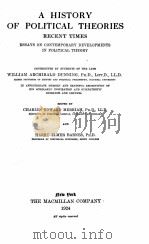
- A HISTORY OF POLITICAL THEORIES
- 1924 THE MACMILLAN COMPANY
-
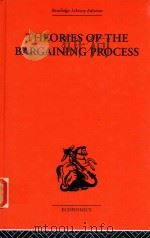
- THEORIES OF THE BARGAINING PROCESS
- 1968 ROUTLEDGE TAYLOR & FRANCIS GROUP
-
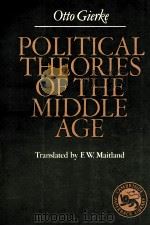
- POLITICAL THEORIES OF THE MIDDLE AGE
- 1990 CAMBRIDGE UNIVERSITY PRESS
-

- THE WAVE AND RALLISTIC THEORIES OF LIGHT-A CRITICAL REVIEW
- 1977 FREDERICK MULLER LIMITED LONDON
-
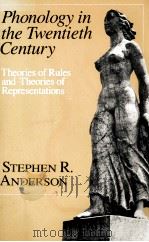
- PHONOLOGY IN THE TWENTIETH CENTURY THEORIES OF RULES AND THEORIES OF REPRESENTATIONS
- 1985 THE UNIVERSITY OF CHICAGO PRESS CHICAGO AND LONDON
-

- THEORIES OF HISTORY
- 1964 THE FREE PRESS OF GLENCOE
-

- THE CLASSICAL THEORY OF ELECTRICITY AND MAGNETISM
- 1937 BLACKIE AND SON LIMITED
-
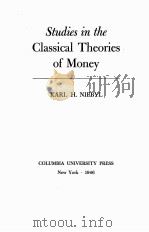
- STUDIES IN THE CLASSICAL THEORIES OF MONEY
- 1946 COLUMBIA UNIVERSITY PRESS
-

- A HISTORY OF AMERICAN POLITICAL THEORIES
- 1920 THE MACMILLAN COMPANY
-

- A HISTORY OF POLITICAL THEORIES
- 1919 THE MACMILLAN COMPANY
-
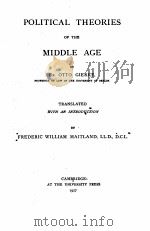
- POLITICAL THEORIES OF THE MIDDLE AGE
- 1927 CAMBRIDGE AT THE UNIVERSITY PRESS
-
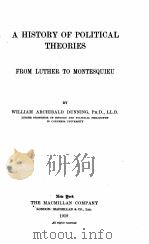
- A HISTORY OF ROLITICAL THEORIES
- 1919 THE MACMILLAN COMPANY
提示:百度云已更名为百度网盘(百度盘),天翼云盘、微盘下载地址……暂未提供。➥ PDF文字可复制化或转WORD


